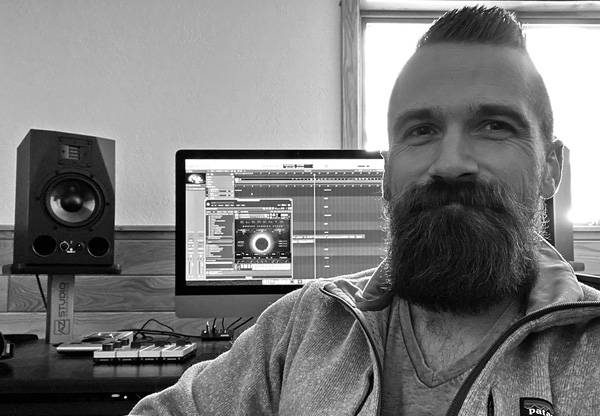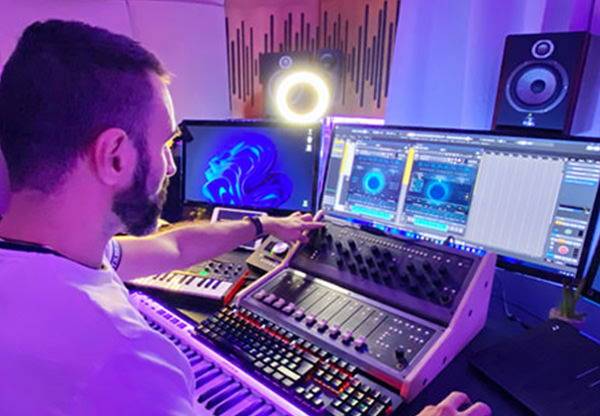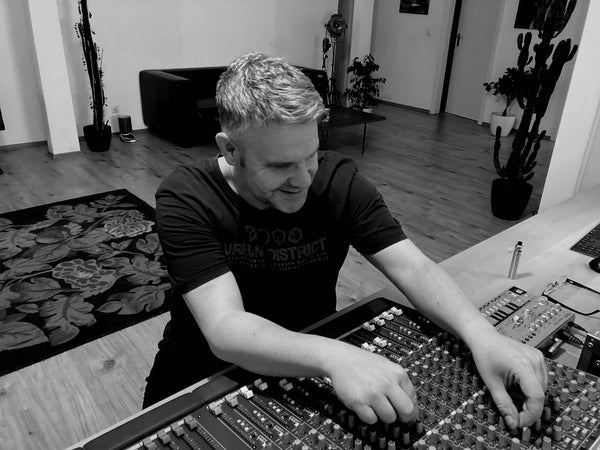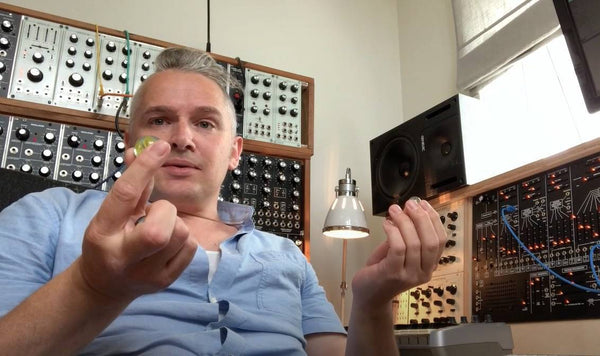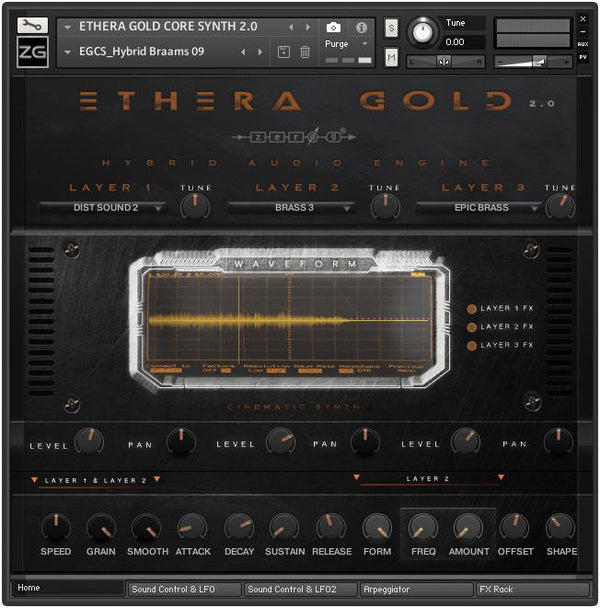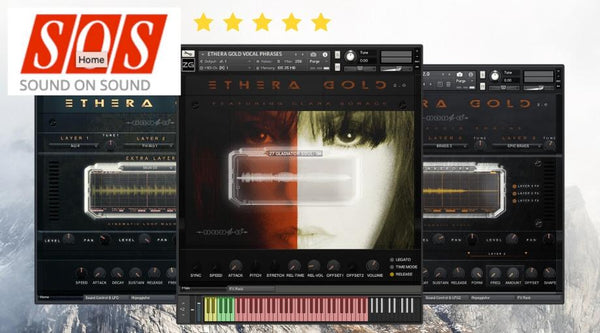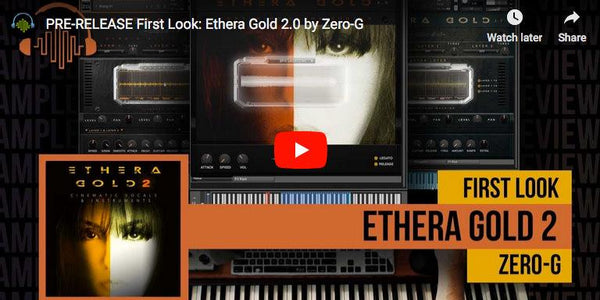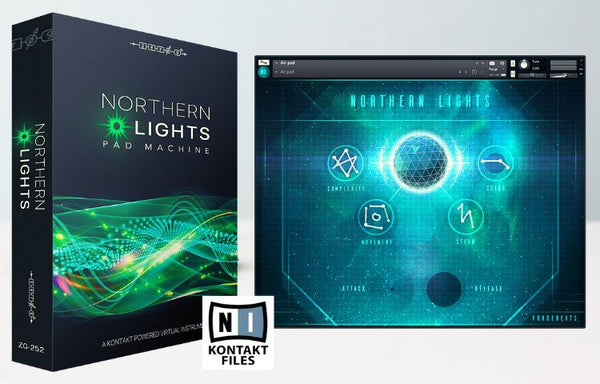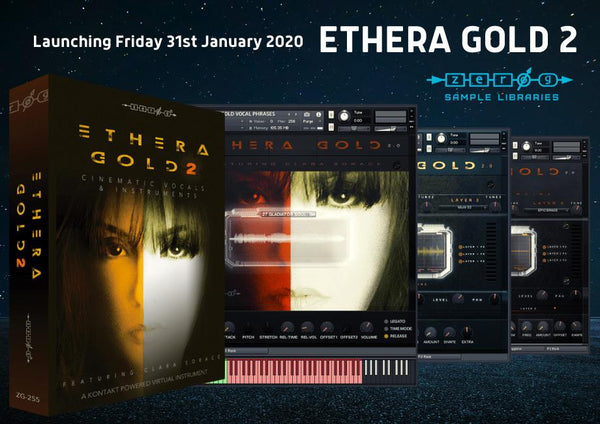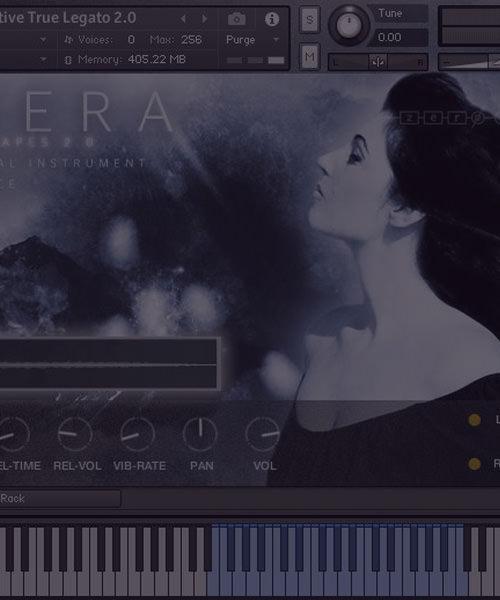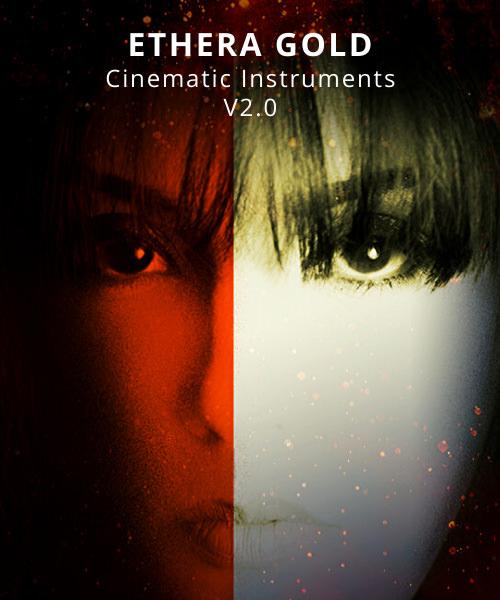We got in contact with the instrument’s creator Sam Spacey, who was also responsible for Zero-G’s Phaedra synth a few years ago, to find out what Epica has to offer…
Hi Sam, first up, could you tell us a little about your own musical background?
Since 1997 I’ve had 43 releases under various names, was signed to Sony at one point with track in charts … MTV video etc.etc. Having just hit 40, I think those days are behind me as oddly enough I find myself enjoying sound design more than composing which is where I find myself today.

What was the original aim for this instrument?
wanted a truly epic synth, a synth which suffered no fillers but only the most beautiful and attention grabbing sounds I could design. It had to be more than just a playback engine… it had to be a synthesizer in its own right. Modern computers had advanced enough to be able to deal with bigger samples and also way more multi-samples than before, so I wanted to create something with true artistic freedom from technological constraints.
Being a big fan of colour in sound I knew that I would need to go all out with the hardware FX. What I mean by this is that you can take a technically perfect sample recorded through the best converters but still end up with something that has no soul to it. I still sample through my Akai S950 for drum beats for this reason, it just does something to the sound.
So it was a case of splashing out on some hi-end colour hardware for recording through and getting down to it.
How long did it take to create?
Three years in total, the first two of these were a bit slow because I was working full time on recording projects as well which took a lot of time up. Epica made music fun when I worked on it so I went full time working on Epica for the last year. It really benefited from the full time attention to detail.
As any decent library developer will tell you, it’s the editing of the samples that takes a lot of the time. Each of the 16,548 samples need to be checked, edited and looped by human ear and hand. I do get annoyed with lazy developers who let a machine do it for them. I defy anyone to hear my loop points, these are the time killer as in a say ‘Pad’ preset you have to spend a lot of time manually moving the loop points of each sample so that you just can not hear where it was looped. The problem becomes tenfold when you are dealing with stereo samples… you really can’t automate these things, but when it’s all done I feel it’s all worth it.
 No virtual synths were used for the samples, everything comes from the big guns of the synthesizer hall of fame. Think big Oakley Modular, Sequential Pro 1, Arp Odyssey, Future Retro, Matrix 6 and much more from the analog along with DX7, D50, Akai S-950. Add in some oddness like the local pre school choir and you have quite a mix. The Eventide H8000FW was just a real ear opener for FX, I really have never heard anything like it, it was a key part to this library.
No virtual synths were used for the samples, everything comes from the big guns of the synthesizer hall of fame. Think big Oakley Modular, Sequential Pro 1, Arp Odyssey, Future Retro, Matrix 6 and much more from the analog along with DX7, D50, Akai S-950. Add in some oddness like the local pre school choir and you have quite a mix. The Eventide H8000FW was just a real ear opener for FX, I really have never heard anything like it, it was a key part to this library.
Tell us more about the key pieces of analog and digital hardware you used for the 17,000+ samples that are found in Epica.
The synth that I have still to scratch the surface on is my ever expanding home built Oakley analog modular synth, the oscillators on this synth even on the lowest note fire audio frequencies hitting above 30khz and the richness of the sound is just a thing of beauty.
Pride of place in the hardware recording chain has to go to the UBK Fatso which you just have to turn on for everything put through it to have that solid weighty organic feel to it. I might have overdriven the unit a few times on purpose to get a certain tone. Epica sounds produced and like a record straight out of the box.
One of the surprising highlights for me was that my sister-in-law came to visit with a bad cold to record her amazing voice. We carried on with the session and the end result that, due to her cold, the “Aaaahs” that I sampled were just jaw dropping, after looping and adding some Neve, UBK and H8000FW goodness the results were truly angelic.
 Like the Kentucky Colonel I’m not going to give away my secret spices…. but I can say that I have used a UBK Fatso on everything along with a certain UBK EQ, Radial DI’s going into a couple Neve 1073N preamp’s and sometimes the Thermionic Culture Vulture. Also heavily used were the amazing Eventide H8000FW Fx unit and the Lexicon PCM 81 and PCM96 along with many analog phasers, analog delays and some distortion units. This all ends up into a Lynx Aurora 8 sound card.
Like the Kentucky Colonel I’m not going to give away my secret spices…. but I can say that I have used a UBK Fatso on everything along with a certain UBK EQ, Radial DI’s going into a couple Neve 1073N preamp’s and sometimes the Thermionic Culture Vulture. Also heavily used were the amazing Eventide H8000FW Fx unit and the Lexicon PCM 81 and PCM96 along with many analog phasers, analog delays and some distortion units. This all ends up into a Lynx Aurora 8 sound card.
For the recordings you used “a very boutique chain of analog hardware” – can you tell us more about that?
I must confess that I am a bit of a hardware snob when it comes to sampling. It’s not that I do not like VST fx it’s just that the extra weight from all harmonics that just ooze from the analog gear makes it all worth it for me to get the sound correct at source rather than applying fx inside the computer.
What would you say are the Top 3 selling points of Epica?
1: The sound, it’s big, glorious and a completely different flavour from anything else out there. Kontakt 5’s engine has really grown since Phaedra, the filters in Kontakt 5 are now really really good. I gave the user 6 of the best filters choices for the synthesizer.
2: Epica’s GUI interface for the synthesizer gives the user so much control over the sound and gets the creative juices going fast when creating new sounds. I’ve found that I don’t go into the Kontakt engine when making presets as the Epica GUI is a lot faster.

3: The sheer size of the 16,548 sample 12GB library and over 600 presets all fully editable means this Synthesizer will keep on going when other libraries fall out of fashion. This is not a preset machine though, the interface makes it so quick and easy to roll your own presets for your own unique sound.
Which types of music would Epica be particularly suitable for?
Originally I was thinking Film Score music with the emphasis on Strings and Pads but the library kept on growing into other areas so I just went with it.
Electronica and Ambient composers are going to love this but also any type of music that wants a huge diverse synth library that does not sound like a virtual instrument. Anyone bored with the same two dimension virtual synth presets should look into this library as it really does have its own sound. I would imagine a lot of radio and TV advert composers will love this library.
One of my Beta testers now swears by Epica for his Drum and Bass releases.
Your previous virtual instrument Phaedra was acclaimed for its ‘obsessive attention to detail’ and ‘excellent value for money’, what’s the key differences between that instrument and Epica?
Even more obsessive multisampling lol….seriously! The pad/string multisamples are never mapped more than 1 note away from their original sample and most are for 7 octaves when possible. For the shorter sounds like bass we are talking every note sampled as well as up to 4 round robins per note. I’m quite sensitive to aliasing so I don’t believe in stretching samples up the keyboard… it just doesn’t sound right.
 For example the shorter sounds like say some of the Pro 1 and Odyssey synth sounds needed the kind of attention that would normally go into a drum library. Every note sampled with Round Robins are needed on synthesizer sounds because no two same note key hits sound the same. This is a big part of the sound, playing 16th notes on the same note with round robins breeds life and analog randomness to the sound. Doing the same with a single sample note just sounds …well… sampled.Having learnt a huge amount from creating Phaedra before, I had also gathered a larger amount of more unique analog equipment. Thinking this time I would really push the boundaries of what was possible using the new Kontakt 5 engine.
For example the shorter sounds like say some of the Pro 1 and Odyssey synth sounds needed the kind of attention that would normally go into a drum library. Every note sampled with Round Robins are needed on synthesizer sounds because no two same note key hits sound the same. This is a big part of the sound, playing 16th notes on the same note with round robins breeds life and analog randomness to the sound. Doing the same with a single sample note just sounds …well… sampled.Having learnt a huge amount from creating Phaedra before, I had also gathered a larger amount of more unique analog equipment. Thinking this time I would really push the boundaries of what was possible using the new Kontakt 5 engine.
A similar technology was used with longer sounds where a random (all variable in the GUI) sample start point was used so you never hit the same start point when you triggered the sample. This is how a real analog synth oscilator works and it really makes a big difference.
For Filter sweeps where possible I used the real filter from the synth I was sampling using velocity to sample start tricks to give the user real time control over the actual hardware synths filter. It is hard to explain in words but I would have the synth I had sampled playing side by side to the preset I was building to ensure the most accurate sound possible.

Finally, anything you’d like to add about Epica that we’ve not covered here?
I’m very impressed with the GUI interface, the guy who put the final interface together did a great job and worked closely with my requirements. I love the fact that if you wish to control any of the EPICA interface knobs, all you have to do is right click on the GUI knob and then just turn your midi controller knob… that’s it… done!
Also I did something that I do not believe has been done before, in the main multi presets I also used the excellent H8000fw and PCM96 fx units to add a reverb that I felt suited the preset. BUT…..the reverb is adjustable in volume as it has its own preset within the multi. So if you want more, less or none at all just adjust it in the multi within a second. You can also synthesize the reverb which makes for some very unique sounds.
Thanks Sam! Epica is powered by the Free Kontakt Player, find out more by clicking here

